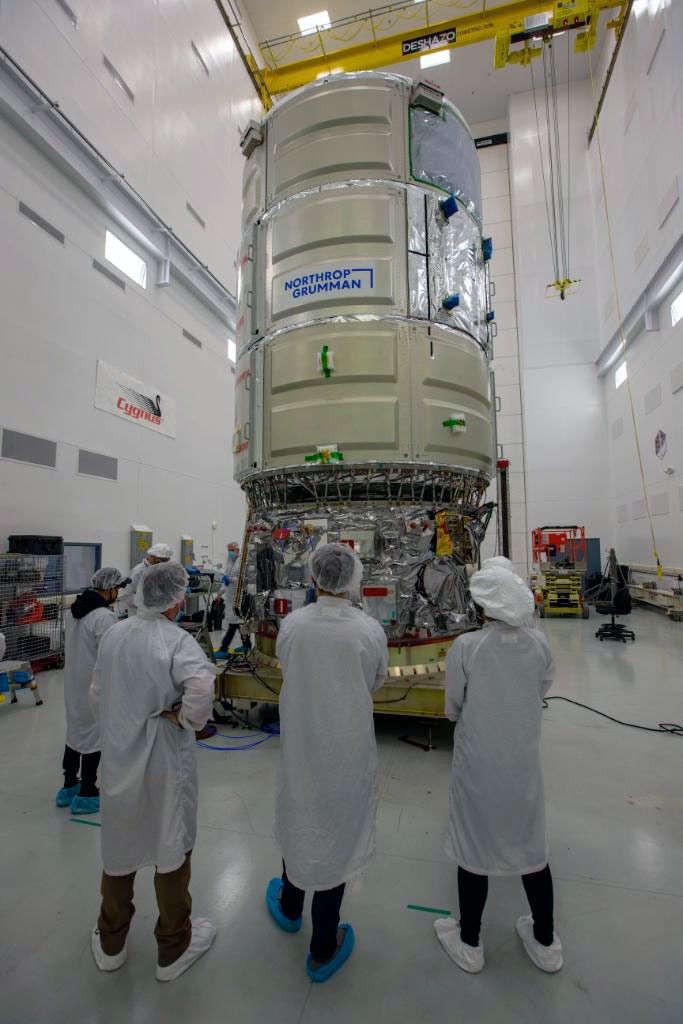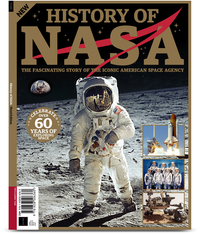Northrop Grumman names spacecraft for NASA 'Hidden Figure' Katherine Johnson

A NASA mathematician whose calculations helped send the first American into orbit is being honored as the namesake for a resupply craft that will support the astronauts circling Earth today.
Should schedules hold, the S.S. Katherine Johnson, a Northrop Grumman Cygnus cargo ship, will launch to the International Space Station on Feb. 20 — 59 years to the day after Johnson's work made John Glenn's Mercury mission possible.
"In celebration of Black History Month, Northrop Grumman announced the name of our NG-15 Cygnus spacecraft in honor of Katherine Johnson, a NASA mathematician who overcame barriers of race and gender," the company wrote in a Feb. 1 press release. "It is the company's tradition to name each Cygnus spacecraft after an individual who has played a pivotal role in human spaceflight."
Related: NASA facility dedicated to mathematician Katherine Johnson
Johnson, who died at age of 101 on Feb. 24, 2020, was among a pool of African-American women whose role it was to be the human "computers" for the National Advisory Committee for Aeronautics, the predecessor agency to NASA. Johnson and her colleagues performed the mathematical work needed by the engineers to advance their aeronautical work.
After NASA was founded in 1958, Johnson transitioned to the Space Task Group at Langley Research Center in Virginia, calculating the suborbital and orbital trajectories for the early U.S. human spaceflights. As part of her work, Johnson became the first woman in NASA's flight research division to be credited as the author of a report.
Years later, after Johnson retired and a book and a movie brought her and her fellow "Hidden Figures" stories to the public's attention, Johnson's contributions to NASA were further recognized with the Presidential Medal of Freedom and the Congressional Gold Medal, as well as the naming of NASA's Computational Research Facility and the roadway in front of NASA's Headquarters building in Washington, DC. Mattel also modeled a Barbie doll after Johnson's appearance.
Get the Space.com Newsletter
Breaking space news, the latest updates on rocket launches, skywatching events and more!
The NG-15 Cygnus is the first spacecraft to fly under Johnson's name.
History of NASA: $22.99 at Magazines Direct
Discover the story of how and why NASA was created, its greatest triumphs, darkest days, and of the times it exceeded all possible hopes. A tale of adventure, heroism and resourcefulness, learn of the space agency's greatest achievements and how — over six decades — the organization has consistently and tirelessly devoted itself to its founding principle: that "activities in space should be devoted to peaceful purposes for the benefit of all humankind".

"Her work at NASA quite literally launched Americans into space and her legacy continues to inspire young black women every day. Northrop Grumman is proud to celebrate the life of Katherine Johnson and her endlessly perseverant spirit," the company said.
The S.S. Katherine Johnson will launch atop a Northrop Grumman Antares rocket from the Mid-Atlantic Regional Spaceport at NASA's Wallops Flight Facility on Wallops Island in Virginia. The uncrewed capsule will deliver approximately 8,200 lbs. (3,720 kilograms) of science experiments, supplies and hardware for the space station's Expedition 64 crew.
After about two months berthed to the station, the S.S. Katherine Johnson will depart and deploy a number of cubesats — including 42 ThinSats as part of an outreach program for students by the Virginia Commercial Space Flight Authority — before performing a destructive reentry into Earth's atmosphere.
The S.S. Katherine Johnson is the second Cygnus to be named for a Black space pioneer. The S.S. Robert Lawrence was named for the first African American to be selected as an astronaut when it launched in February 2020.
Other Cygnus spacecraft namesakes have included former company executive J.R. Thompson and NASA astronauts David Low, Gordon Fullerton, Janice Voss, Deke Slayton, Rick Husband, Alan Poindexter, John Glenn, Gene Cernan, John Young, Roger Chaffee and Alan Bean. The most recent Cygnus, which launched in October 2020 and departed the space station in January, was named the S.S. Kalpana Chawla after the first Indian-born woman to enter space.
Follow collectSPACE.com on Facebook and on Twitter at @collectSPACE. Copyright 2020 collectSPACE.com. All rights reserved.
Join our Space Forums to keep talking space on the latest missions, night sky and more! And if you have a news tip, correction or comment, let us know at: community@space.com.

Robert Pearlman is a space historian, journalist and the founder and editor of collectSPACE.com, a daily news publication and community devoted to space history with a particular focus on how and where space exploration intersects with pop culture. Pearlman is also a contributing writer for Space.com and co-author of "Space Stations: The Art, Science, and Reality of Working in Space” published by Smithsonian Books in 2018.In 2009, he was inducted into the U.S. Space Camp Hall of Fame in Huntsville, Alabama. In 2021, he was honored by the American Astronautical Society with the Ordway Award for Sustained Excellence in Spaceflight History. In 2023, the National Space Club Florida Committee recognized Pearlman with the Kolcum News and Communications Award for excellence in telling the space story along the Space Coast and throughout the world.











